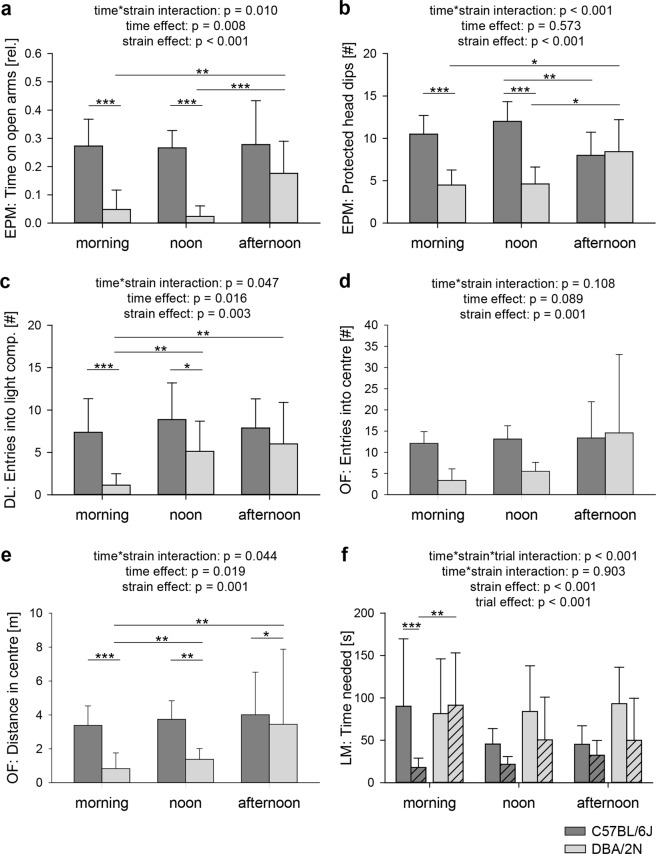Figure 2.
Influence of time and strain on behavioural testing. Representative selection of data of female C57BL/6J (dark grey) and DBA/2N (light grey) mice that were subjected to the elevated plus-maze (EPM), dark-light (DL), open-field (OF), and labyrinth-maze test (LM) during ‘morning’, ‘noon’, and ‘afternoon’ testing conditions, demonstrating significant interaction and main effects. Statistics: Linear mixed models, Bonferroni-Holm post hoc testing. Data are displayed untransformed as means + SD to ease interpretation. Every test, except for the LM, was performed only once and is represented by blank bars. With regard to the LM test, blank bars represent the 1st trial, while dashed bars indicate the 2nd trial after a 5-minute between-trial pause. There were significant time-by-strain interactions concerning (a) relative time on open arms and (b) protected head dips on the EPM, (c) number of entries into the light compartment of the DL, and (e) distance travelled in the centre of the OF. Furthermore, main effects of time were detected with regard to (a) relative time on open arms of the EPM, (c) number of entries into the light compartment of the DL and (e) centre distance in the OF. A significant main effect of strain was present with regard to all displayed parameters (a–f). (f) The time needed to reach the end of the LM was significantly influenced by a time-by-strain-by-trial interaction and trial effect. *p < 0.05; **p < 0.01; ***p < 0.001. Sample sizes: C57BL/6J: morning = 8, noon = 8, afternoon = 8; DBA/2N: morning = 8, noon = 8, afternoon = 7.

